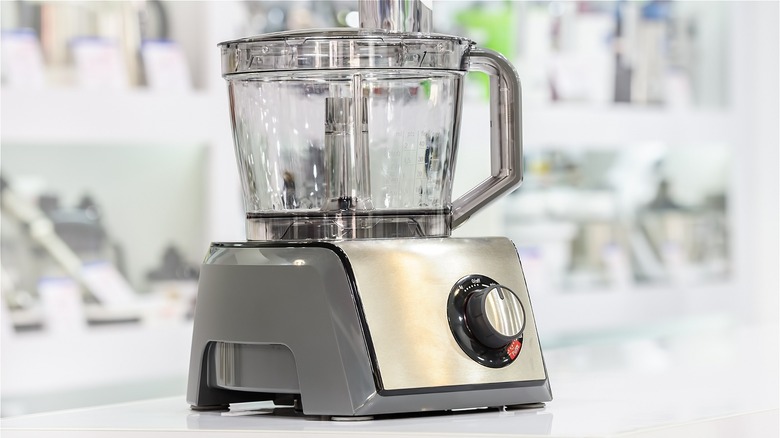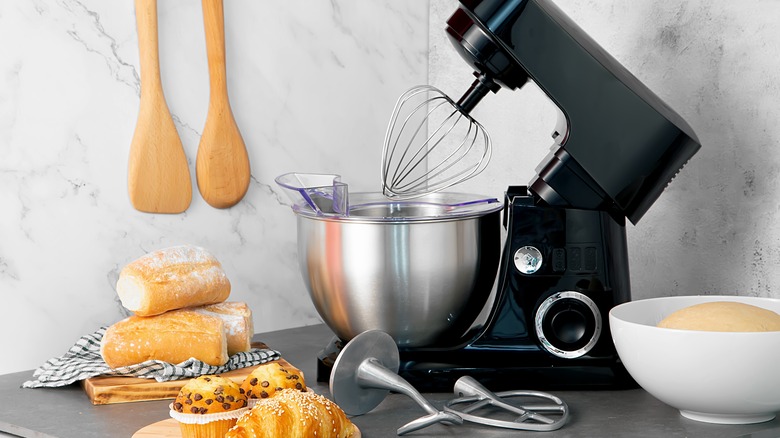The Reason You Shouldn't Use A Food Processor In Place Of A Mixer
We may receive a commission on purchases made from links.
Don't know the difference between a food processor and a mixer? We've all been there. According to Reader's Digest, food processors are both a mixer and a blender. A mixer has several usages including stirring, whisking, or beating food. There is an overwhelming variety of food processors out there (and we even rounded up the best ones of 2022 for you), but it's not uncommon to get confused about when to utilize which appliance in the kitchen.
To help demystify when it's the right time to use your food processor that you see famous chefs whipping out on a moment's notice, Woman and Home claims that the kitchen gadget is great for meal-prepping smoothies or certain purees. You can place cut foods in the funnel (make sure they are small enough to fit) and watch the machine do its magic. One pro tip: never place hot food in the processor because it can kill the motor.
It depends on the consistency you want
KitchenAid explains that a standing mixer is best to mix, knead, whip, and mash ingredients. For example, cookie dough, banana bread, cakes, meatloaf, and homemade bread are all recipes that would call for a stand-in mixer. A handheld mixer is a bit different, as it is more versatile and often just used for baking.
However, a food processor can chop, slice, shred, grind, and puree almost any food that you throw into it (via HowStuffWorks). Picking the wrong machine will cause your food to have the wrong consistency, as a food processor often has a finer finish. Recipes that would be optimal for a food processor are purees, dips, and doughs (like hummus, hash browns, or pie crust). If you are unclear about what to use while cooking or baking, take a look at the recipe you are referencing and see what it calls for.
The directions are almost guaranteed to utilize certain buzzwords like 'puree' that allow you to figure out if a food processor or mixer is needed. You got this!

